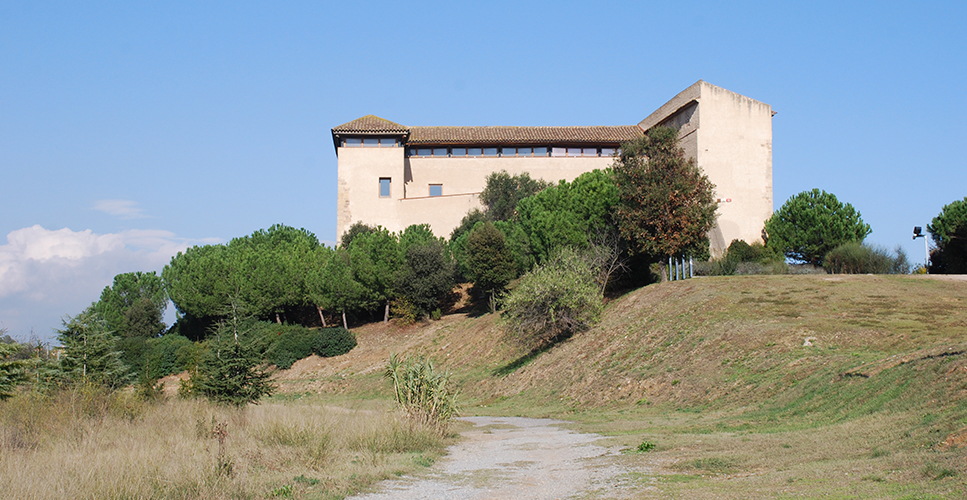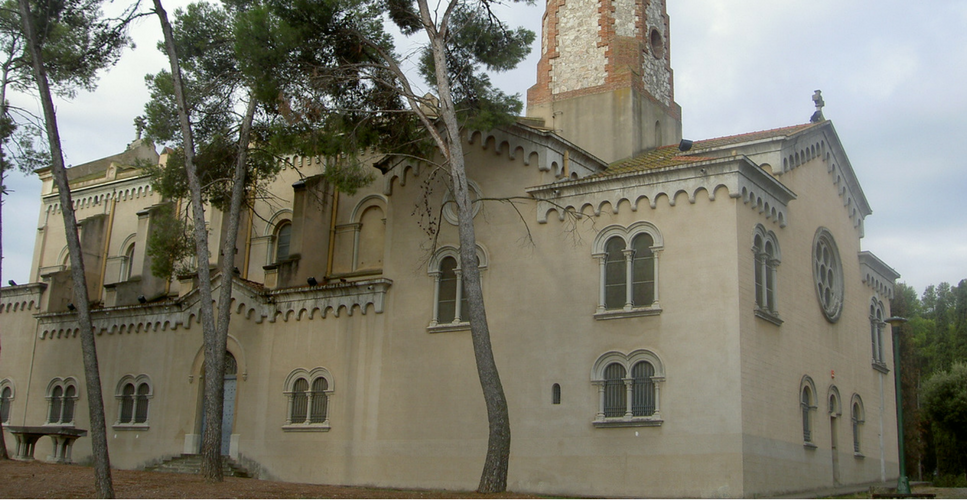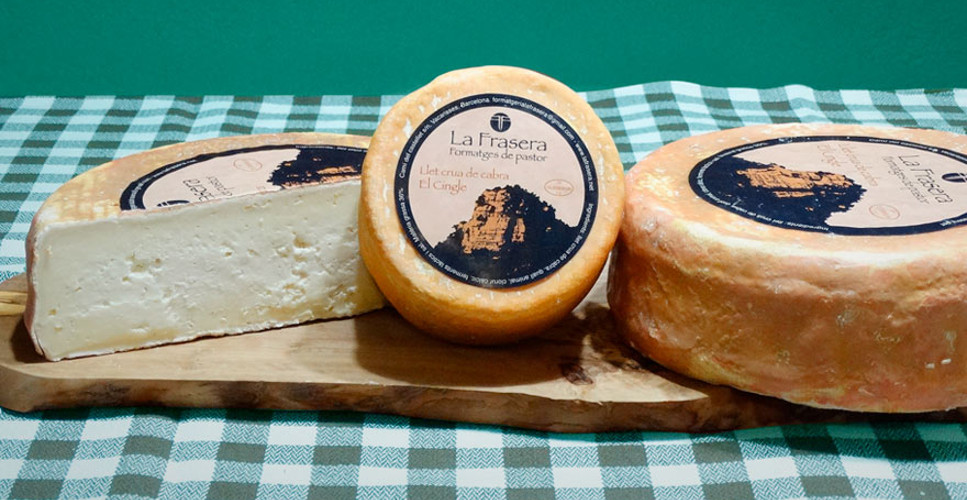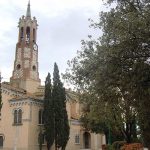
Linear route that runs between the Vallès plain and the foot of the pre-coastal mountain range, from Sabadell to Castellar, going through the mountain range of Sant Iscle. Approximately a two hours on the way out and two hours on the way back trip, we will learn from the comfort of the carriage the combination of agricultural crops and forest areas that still enriches the stand of the Vallès cities and villages and give rise to a great biological diversity, both vegetation and fauna.
ROUTE
We leave the parking of the Santuari de la Salut, where we can get by bus from Sabadell or in our own vehicle which we will leave parked. Already on the carriage, we will head for to Sentmenat along the road for a few meters. We will take a path of carriage which goes to the left. Right away we will see that we are in the heart of the forest stand of Sabadell, heading for the ancient path of Ripollet to Castellar, which allows good views to the right and left, from the Montseny to Montserrat, respectively. We find crops of dry land and some of irrigation, which will allow us to differentiate them.
At the beginning of the road it is more open to the left and there is a fence on the right. Behind this, we can see a traditional rainfed farm with vineyards and olive trees.
To the left we see a few houses, one of them still breeds cattle. All the way there are cypresses that close off the field. At the bottom we see a pelota court and, in front, a good specimen of pine, with its dense rounded crown. We continue between fields of grain and olive trees. We will see a large cherry tree overhanging over the fence of a house on the left. Just then it begins a large field and to the right we see a fence with irrigated vegetable gardens: potatoes, beans… with the raft for water and some fig trees dominating the set. Almost before the raft, to the left, at the margin of the field there is a large almond, the single point of shadow of this stretch.
From here, behind the field, we see Pedra Santa and, behind the Montseny. Turning the view to the left, we will see the cliffs of the Bertí, the Farell, the Puig de la Creu, Sant Llorenç, Serra de l’Obac and Montserrat. Behind the crop fields on the left we can see the margins of the Ripoll river, Sabadell and the mountain range of the Galliners. At the end of the gardens, the two sides of the road are rising and are covered with broom. On the way back from this point we will see all the Serralada Litoral.
The road continues plain next to a few vegetable gardens on the left and a farm with horses on the right. Just after the vegetable gardens we find a detour that connects with Togores and the Torre del Canonge. We pass through a small forest of oaks, which seems like a small torrent and we see a masia on the right. Leaving the grove, on the right, a oak will comb us with its branches and, except in winter, we will be able to see the wavy edge of its leaves perfectly. The left margin remains high and covered with wild plum trees and brambles. According to the time when we go through, we can find a goat herd that graze in the area.
At the end of the fields, the road runs at the beginning of the forest, especially of white pine. Below we can see a lot of rockrose, rosemary, gorse, mastic and young oaks that grow under the shade of pine trees.
A curve to the left and when the road starts to rise, to the left we find a good stretch of well formed oak grove. We are heading for a good stretch, alternating this typically Mediterranean forest with alternation of some grain fields and with intermittent views of Montserrat to the left and Sant Llorenç ahead.
If we pay attention to the forest on the right, all of a sudden we will see a set of eucalyptus, with the bark that peels and the long leaves and greyish in colour. Once we move, the path widens in a crossing where there are the ancient walls of an entry to a farm. Here we stop and take the opportunity to stretch our legs and take a bite, while the horses are recovered of the rise.
The road continues now for a good stretch in the middle of pines and young oaks, plain with a couple of strong slopes. We will find the detour toward Can Casamada to the left and to Sentmenat to the right, both signalled.
As we move closer to Castellar, we see signs of humanity: a margin of dry stone, vegetable gardens and crop fields to right and left. When the road turns to West, we can see the hill of the cemetery of Castellar, behind the fields. The road lines up. We can take a break and head for the way back or make a longer stop a little later and eat.
ACCUMULATE GRADE

DON’T MISS…

Forest stand of Sabadell: natural area of the municipality of Sabadell. This is a space in transformation, dynamic, which is regulated by the interaction of the natural processes and human activities that are carried out. Hunting is totally prohibited.
River Tort: a tributary of the river Ripoll, it is born under the cemetery of Castellar del Vallès. It has a very nice course at its beginning, tortuous and twisted bottom half, which has given it the name of Tort river (“Twisted”).
Santuari de la Salut: In 1876 it was laid the first stone of the sanctuary, where it had been the chapel of Sant Iscle and Santa Victòria. In 1879 the temple was finished, but the cover sank. The architect Miquel Pascual i Tintorer took over a second project. The vicissitudes of the sanctuary did not end here, because during the Civil War a part of the temple was destroyed. The reconstruction was carried out by Francesc Folguera. In the interior of the temple you can admire the murals by the painter from Sabadell Antoni Vila Arrufat.
Les masíes: the Vallès was a land of small villages of farmers and rich masies until the beginning of the industrialization, moment in which, in many cases, the masies located on the banks of the river Ripoll were transformed into mills and industries. The masies have been adapting to the needs of their owners in each moment, and that is why they attest to the different architectural styles, and this makes their dating difficult. Can Vilar, located near the river Tort, is one of the largest farms in the forest stand. According to documentation found, there is data of the family Vilar from the 15th century.
Roman Villa of la Salut: Roman site in the surroundings of the sanctuary of the Mare de Déu de la Salut, identified as a type of rural village, founded in the Republican period at the first half of the first century BC on a previous Iberian settlement. From the rustic part, dedicated to the production and commercialisation of Laietan wine, we should mention a large storage area with sixty dolia, a large furnace of production of Tarragona amphoraes of the Laietana 1 type and three furnaces of more common ceramics and Hispanic sealed. From the urban or residential part, they stand out the remains of a bathing area with the presence of a large central pool or natatio and two smaller pools of almost two meters deep, connected by a main drainage channel of more than 15 meters length.
It should also be noted a paved room with a mosaic of black and white tesserae and with the figure of Neptune accompanied by a siren.
Camí Ral de la Serra or from Ripollet to Castellar: historical and cattle way well preserved in many sections. It is part of the narrow pass that, by Can Catafau, heads for towards Moià and Alpens to the mountains of the Molina or Núria.
SUGGESTIONS
Togores chapel, la Torre del Canonge, the torrent of Colobrers or the chapel of Sant Nicolau are other points of interest that are near this route.
Also you may be interested in…

The torrent of Colobrers and the chapel of Togores
A cool air itinerary around holm oak and pine forests. Comen on?

Sanctuary of the Mare de Déu de la Salut
Magnificent church located on the remains of the ancient Roman villa of Arraona.

Local products
In the Vallès, you will find a number of unique products linked to the territory. Come and try them all!





No Comments